Edgar Degas (Paris, 1834 - Paris, 1917) was one of the most prominent members of the Impressionist group and participated in all but one of the association’s eight exhibitions. However, it would be limiting to circumscribe his artistic story solely to this experience. Indeed, while Degas shared many artistic principles with his colleagues, On the other hand, he clashed in several respects with the more intransigent Impressionists, such as Claude Monet (Paris, 1840 - Giverny, 1926), Camille Pissarro (Charlotte Amalie, 1830 - Paris, 1903) and Alfred Sisley (Paris, 1839 - Moret-sur-Loing, 1899). Indeed, although Degas had many points in common with the other members of the association, such as a devotion to the Parisian painter Édouard Manet and the custom of depicting contemporary subjects, his overall view of art was far removed from the general view of the group. In fact, the more orthodox Impressionists used to make only en plein air works and upheld the superiority of color over drawing. In contrast, Degas never abandoned the custom of completing or making his works on the basis of a drawing within the atelier.
Moreover, Edgar Degas was not only a great painter but also an important art expert. His training was marked by a passion for the Old Italian masters and contemporary French art of the time, showing particular attention to the two masters Ferdinand Victor Eugène Delacroix, the father of French Romanticism, and Jean-Auguste-Dominique Ingres, the most important painter of French Neoclassicism. Finally, it is important to remember that Degas was not only limited to a vast knowledge of Western art, but was also a great admirer of Japanese art.
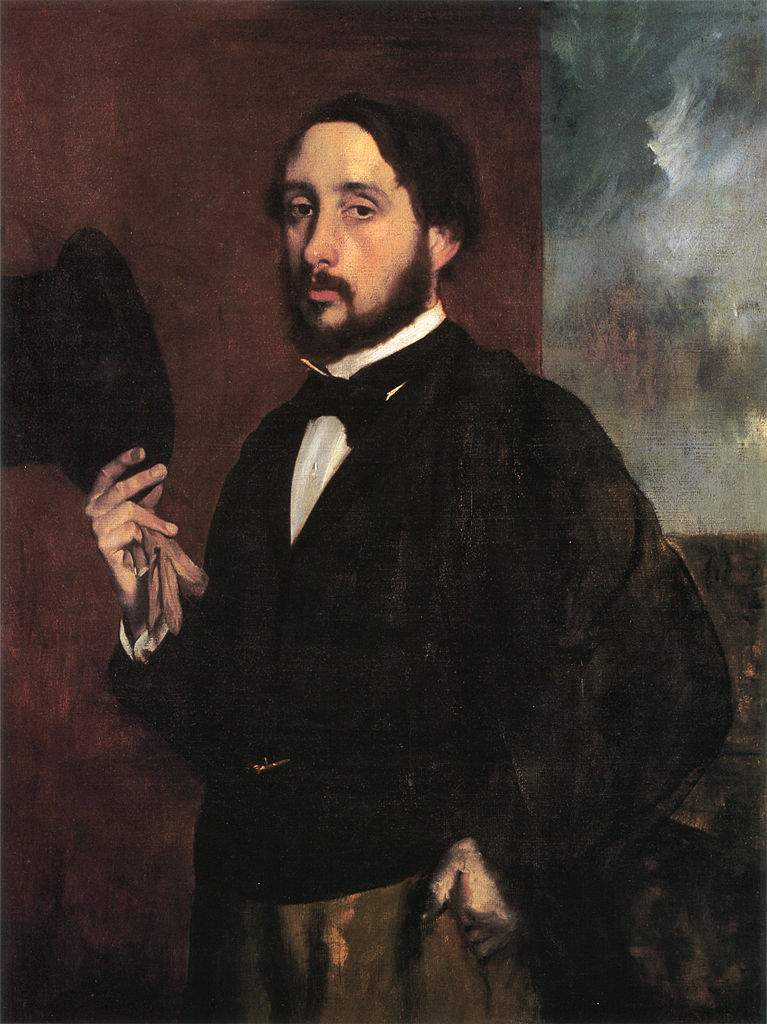
Hilaire Germain Edgar Degas was born in Paris in 1834 to banker Laurent-Pierre-Auguste Degas and Célestine Musson. His father was the director of a Paris branch of his father’s bank and a great admirer of art. Edgar attended Louis-le-Grande High School once he graduated, he enrolled in law school to fulfill his father’s wish, who dreamed of a future as a magistrate for him. However, the boy abandoned his law studies after no more than six months to devote himself to his great passion: art. After an initial period of distrust on Laurent’s part, Degas eventually received his father’sapproval, which allowed him to pursue a career in art. Young Edgar spent his early formative years copying the works of the great masters of the Renaissance, for example Michelangelo, Mantegna, Rembrandt, and Dürer, but also of some contemporary artists, such as David, Ingres, and Delacroix.
In 1855 Edgar Degas had the opportunity to meet one of his greatest idols Jean-Auguste-Dominique Ingres, who explained to the young Degas the principles behind his vision of art. According to Ingres, the ultimate goal of art was to seek and recreate eternal beauty through the union of eternal beauty (the study of the masters of ancient painting) and natural beauty. in this way the artist could capture the intrinsic beauty of the surrounding reality and purify it of its imperfections. In addition to these theoretical lessons, Ingres advised Degas to practice drawing, because only a skilled draughtsman would be able to become an excellent painter.
Degas took up all these teachings and in 1856 traveled to Italy in order to study the art of the old masters live. Initially Edgar landed in Naples, but after a few months he moved to Rome, where he stayed for almost two years. In the capital of the Papal States, Degas attended Villa Medici, an art institute for young French artists who had won a state scholarship. Later, between 1858 and 1859, Degas stayed in Florence, where he was able to admire the masterpieces of Renaissance art and travel to nearby places such as Pisa, Orvieto and Assisi to expand his knowledge. Also during his Florentine stay, Degas frequented the Michelagnolo café, the meeting place of the Macchiaioli, one of the most important artistic movements of the Italian 19th century. As can be understood from his own words, quoted by Ambroise Vollard in his 1924 monograph on Degas , the Italian sojourn helped him mature and left an indelible mark on his artistic career: “You must copy and copy the masters, and only after you have signed all the proofs of a good copyist can you reasonably allow yourself to paint a radish from life.” In 1859 Edgar Degas returned to Paris and began making historical paintings, characterized by the mixture of his studies of the Italian masters and a naturalistic style.
1862 was a key year in Degas’s life because he met Édouard Manet (1832-1883), one of the fathers of modern painting. The meeting was most important for the young painter because Manet introduced him to the painting of Gustave Courbet, one of the most fashionable artists of the time, who had published the manifesto of realism the previous year. Courbet argued that artists should limit themselves to representing their own epoch and criticized those authors who, in his view, wasted time representing distant or future epochs, of which they could only have a distorted view. His knowledge of Courbet’s realist theories and his friendship with Manet were the basis for Degas’s artistic turnaround, as he stopped depicting historical scenes and began to focus on contemporary subjects.
1868 was an equally important year because Edgar Degas began frequenting the Café Guerbois on the rue de Batignolles, where the Impressionist movement developed a few years later. Among the most important artists he got to know were Claude Monet, Camille Pissarro, Auguste Renoir, Paul Cézanne, and Alfred Sisley.
The 1970s were among the most active in terms of artistic production, and the subjects he would treat until the end of his career began to emerge: horse racing, the world of theater, portraits, nudes, laundresses, and Parisian nightlife. It was also during these years that Degas began his detachment from the institution of the Salon, because he felt that the juries were unfair and the displays inappropriate. An initial moderate criticism was succeeded by a decision to stop exhibiting at the Salon, preferring to rely on the collector and art dealer Paul Durand-Duel.
Between 1872-1873 Edgar stayed with his brother René in New Orleans, USA, where he executed one of his most famous works, The Cotton Market in New Orleans. The year in America was not particularly stimulating for Degas, who preferred to return to Paris, where he resumed contact with his friends at the Café Guerbois.
At the end of 1873, the group of artists from the Café succeeded in forming the Société Anonyme des Artistes Peintres, Sculpteurs, Graveurs, with the aim of holding exhibitions independent of the rules of the Salon and the demands of the market. In 1874 the first exhibition was organized, at which Cézanne, Pisarro, Degas, Sisley, Renoir, Monet and Berthe Morisot exhibited. It was during this occasion that the term "Impressionists" was used for the first time by art critic Louis Leroy to negatively define Monet’s work Impression, Sunrise (read more about the work here). Despite the negative connotation of the term Impressionism, the artists of the fellowship decided to adopt it to present themselves publicly, while Degas never accepted that designation, preferring instead the term realism.
Unlike the previous decade, the 1880s were very hard for Degas, due to a series of negative events that led him to greater isolation. In 1883 Manet died, and after only a year the vision problems from which Degas had suffered since adolescence began to worsen, gradually leading him to blindness. After a series of failures collected during Impressionist exhibitions, however, Edgar was able to redeem himself by mounting his first and only solo exhibition organized by the Durand-Ruel art dealer.
The last years of his life were very hard for Degas, who had to give up painting completely due to blindness, thus turning to clay sculpture, the only possible activity (given the means of the time) for a blind man. The artist died in solitude on September 27, 1917, in Paris.
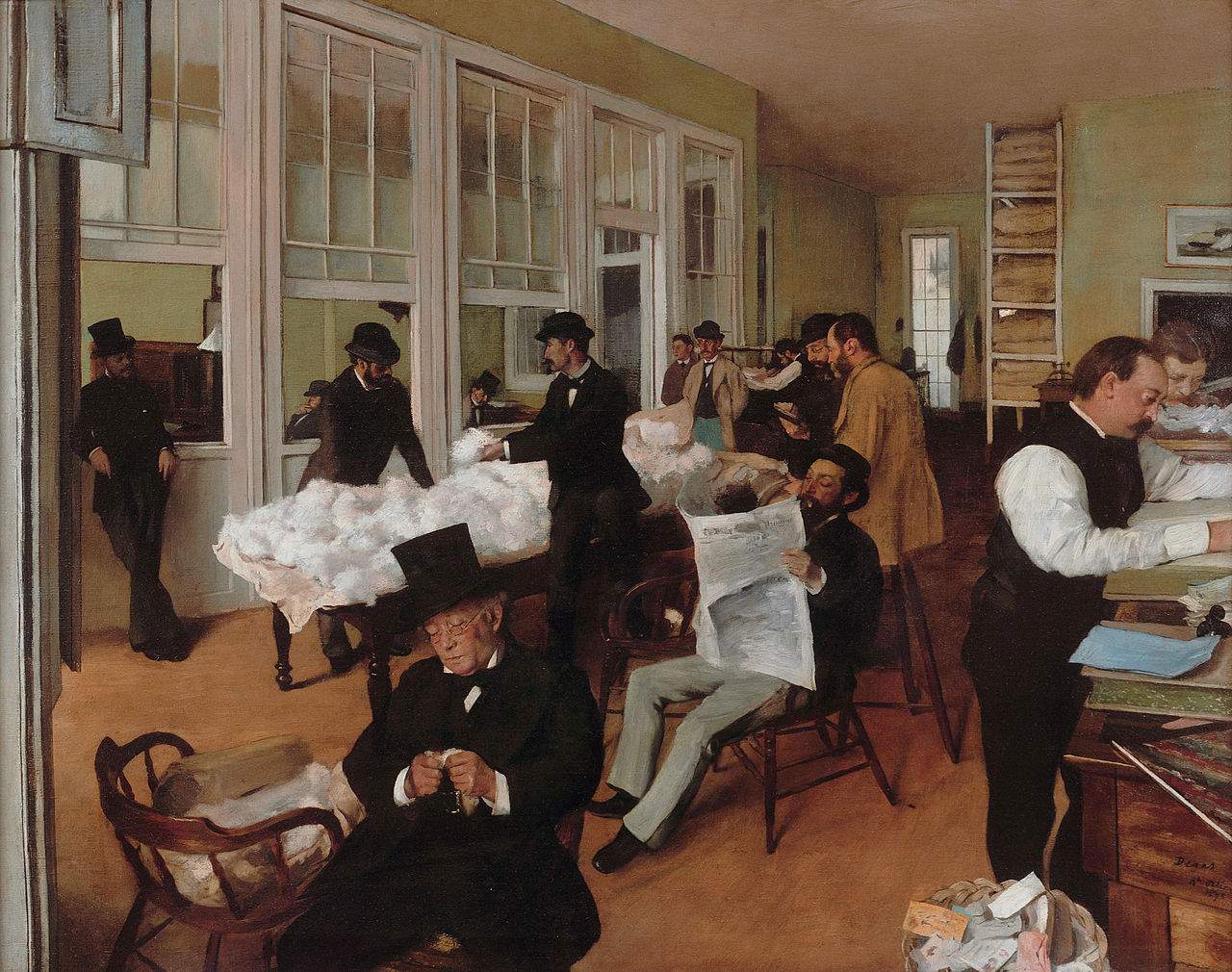
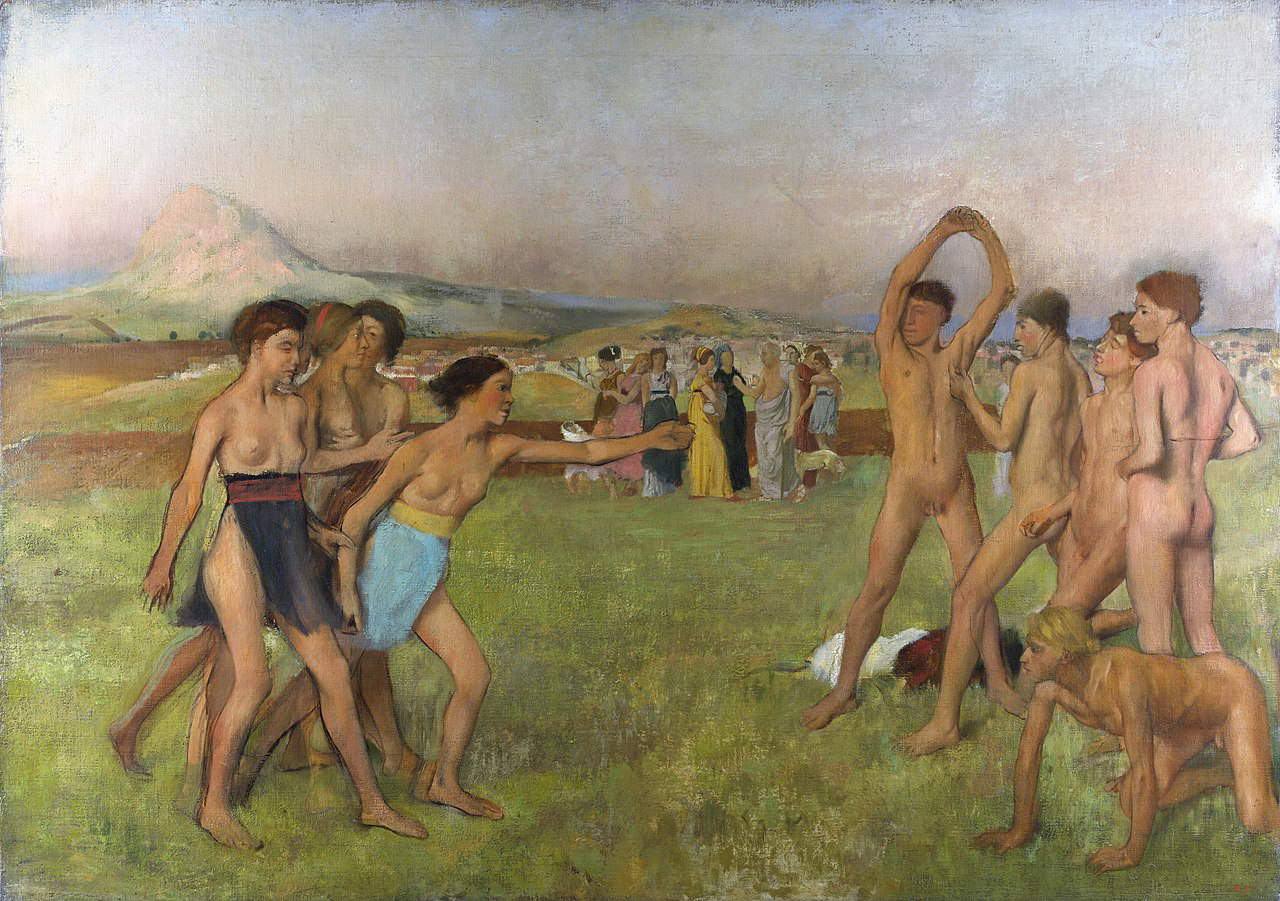
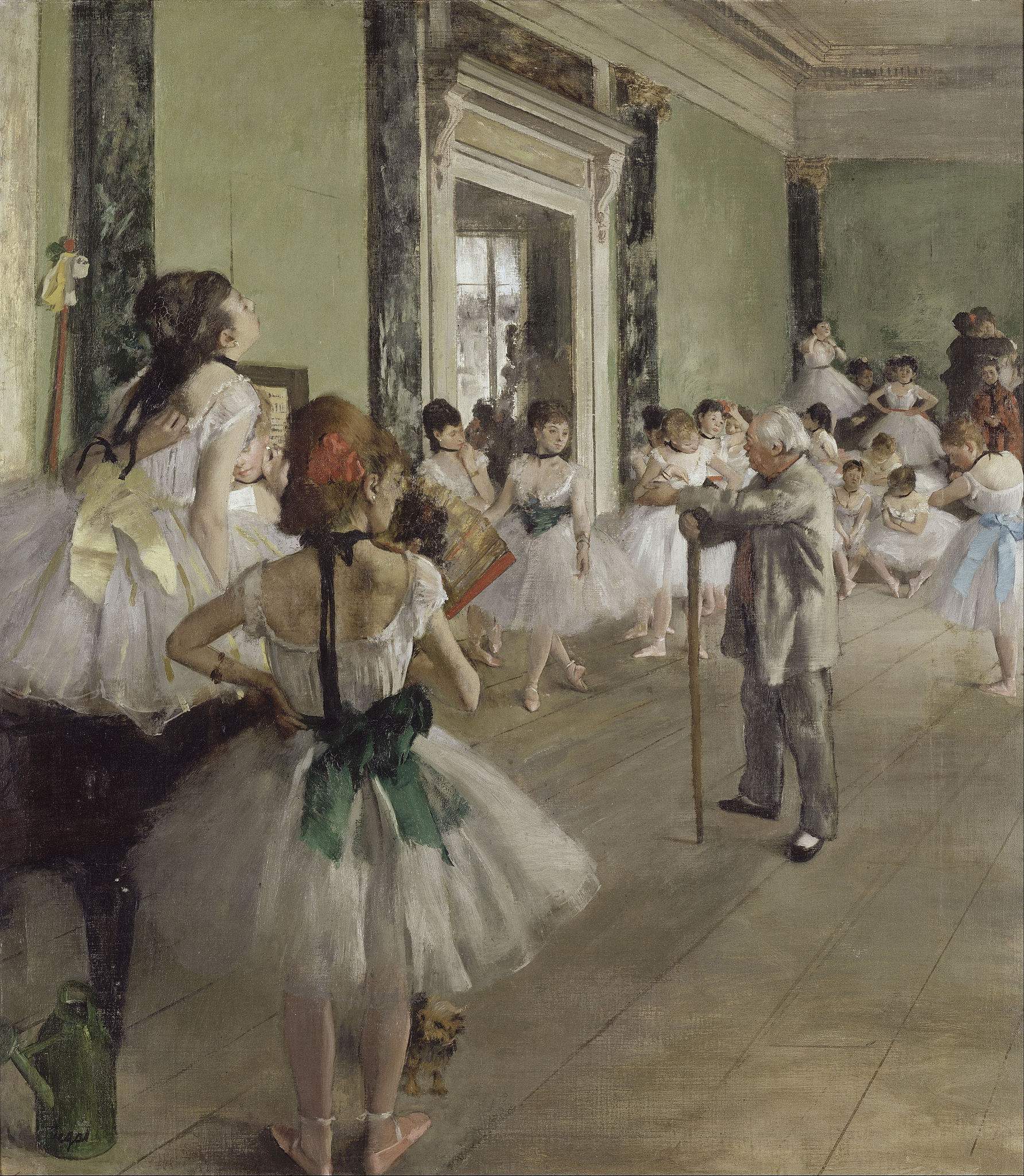
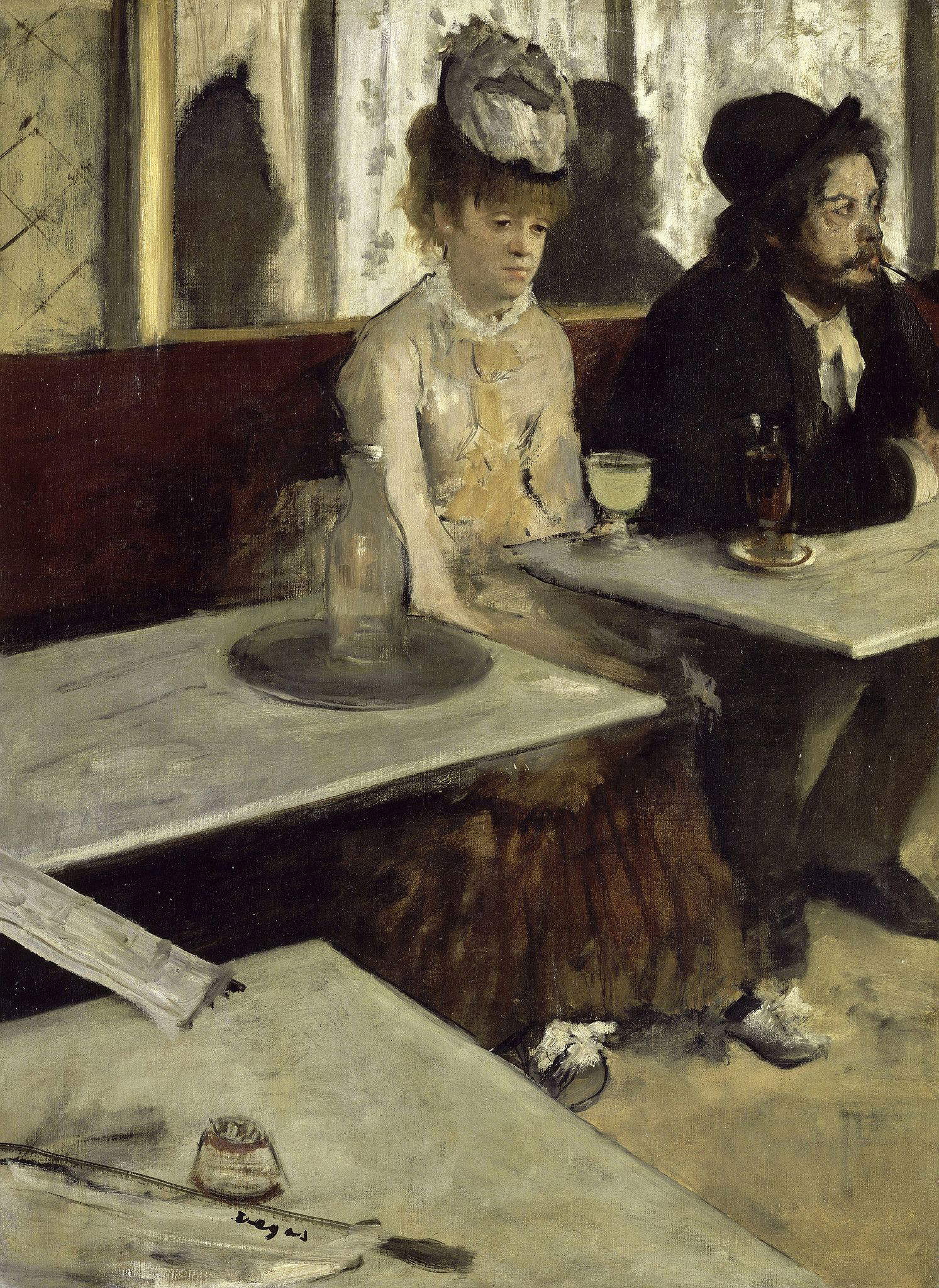

Edgar Degas’ s early years were marked by an intense study of the works of the Old and Modern masters that resulted in the historical works of the early 1860s. The most important painting from this period is Young Spartan Women (1860-62), probably inspired by an account by the Greek historian Plutarch of the courtship rites of the Spartan people. In the foreground is depicted the courtship ritual of the Spartan women inviting the men to fight, while in the background are arranged the mothers of the boys. In this work one can see the results of Degas’s years of study of classical culture and the works of Jacques-Louis David, France’s foremost neoclassical painter. The bodies seem frozen in space, and the three groups give the impression of not communicating with each other. However, the rigidity of the theme and setting is contrasted by the naturalistic rendering of the bodies and the color spread by wide backgrounds in homage to the frescoes of the Italian painters.
Beginning with his encounter with Manet and Courbet’s realism, Edgar Degas began to focus on mainly contemporary subjects. Among the Parisian painter’s favorite themes was the depiction of dancers, who were a perfect subject for the various representations of motion. In fact, Degas loved to contrast the contrived motion of dance steps with the natural motion of dancers caught in moments of pause. The Dance Class (1871-1874) depicts a dance lesson by the famous master Jules Perrot, given to his class of dancers(read more about Degas’ most famous sculpture, the Ballerina, here). The girls arranged in front of the master’s gaze assume elegant, mannered poses, while the dancers at the side of the room and away from the stern master’s watchful eye take advantage of the pause to relax in awkward, clumsy poses. The severe perspective scanning of the floor and the marked pencil markings demonstrate the ambiguity of Degas’s relationship with the other Impressionists. Indeed, all these elements testify to a careful preliminary study of the work, in contrast to the en plein air practice of the other members of the group.
Absinthe (1875-1876) is probably Edgar Degas’ most famous work. Two friends of the painter posed for the painting: actress Ellen Andrée and painter Marcellin Desboutin. The actors played two anonymous figures inside a bar, in the grip of the effects ofabsinthe, an alcoholic beverage popular at the time. The work seems to represent in painting the subjects and events of the great realist novels of the nineteenth century. In fact, in Absinthe there is no polemical intent toward the society of the time, exactly as in Zola’s works, but only a desire to capture a fragment of reality. The painting allows us to understand the artist’s varied cultural background because while the realist teachings of Manet and Courbet can be seen in the subject matter and the marked lines of the drawing, it is also possible to see how the drafting of color agrees with other Impressionist painters. At the same time, the spatial construction reflects the influences ofJapanese art on the painters of the time. At that time, Japanese art had already been spreading in France for a few decades and had quickly won the hearts of the Impressionists. In particular, the Parisian group appreciated the spatial construction of Japanese artists, who did not arrange figures according to Western rules of perspective and did not place subjects in the center of the work. In Wormwood, these characteristics can be seen in the zig-zag structure outlined by the tables and in the shifting of the two subjects to the right of the painting. Finally, the work is also not exempt from the studies made on photography, because the viewer’s point of view coincides with the small table in the foreground: this gives the viewer the sensation of sitting next to Degas in the act of portraying the two patrons.
At the 1886 Impressionist exhibition Degas exhibited ten pastels depicting a series of nude women engaged in private activities. Le tub depicts a woman inside a tub in the act of rubbing her neck with a sponge. With this work it is possible to close Degas’s artistic journey that began with his study of the great nudes of the past. Here the now mature painter seems to strip his nudes of the classical aura of his youthful works without falling into vulgarity, depicting everyday scenes that every person of the time had to undergo.
Edgar Degas ended his artistic career by remaining faithful to the last to his aesthetic ideals and the lessons learned from the various personalities he met during the course of his life. Precisely for this reason, the painter falls squarely within the survey of the most celebrated artists of the nineteenth century.


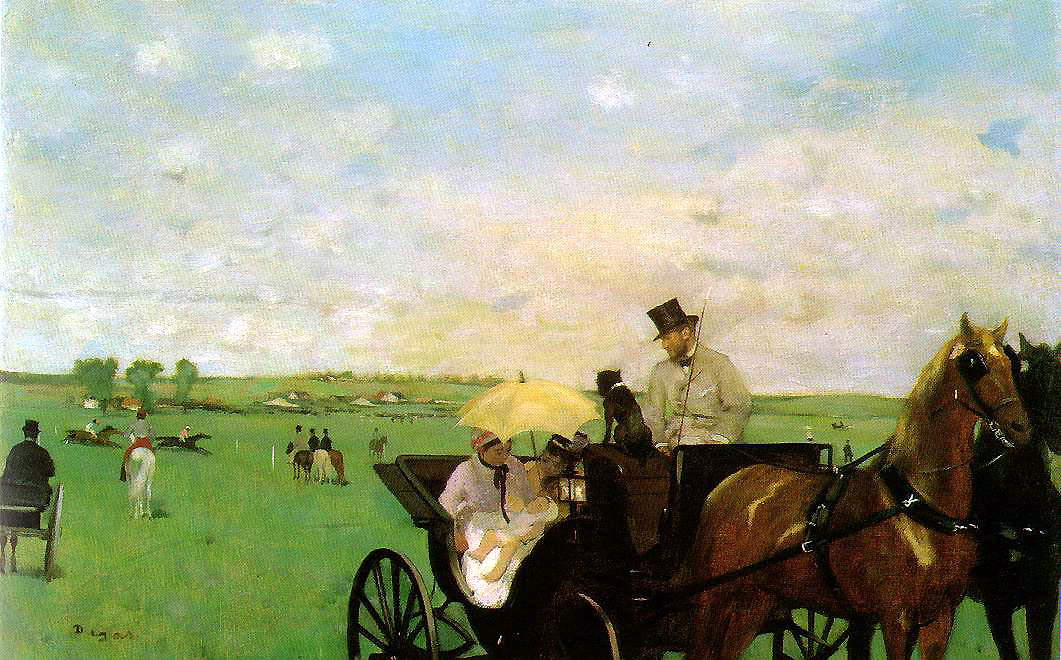
Most of Edgar Degas’s works are preserved in Paris. More than half of the French master’s masterpieces are kept at the Musée d’Orsay, where you can see The Bellelli Family, Le défilé (Race Horses in Front of the Grandstands), The Opéra Orchestra,The Dance Class, Absinthe and The Tubes. However, it is also possible to find some works scattered throughout the rest of France, for example in Pau, the Musée des Beaux-Arts houses The Cotton Market in New Orleans, while the Musée des Beaux-Arts in Lyon has The Café-Concert at the Ambassadeurs inside.
The United States also welcomes numerous works by Degas, for example you can see the painting Woman with Chrysanthemums at the Metropolitan Museum of Art in New York. In contrast, the Museum of Fine Arts in Boston houses Carriage at the Races. Several other museums house masterpieces by Degas, such as the Museum of Art in Dallas, the Brooklyn Museum of Art in New York, and again the National Portrait Gallery in Washington.
Other works by Degas are exhibited in various parts of the world, for example, the National Gallery in London houses three canvases by the Parisian master, including the famous paintings Young Spartans and Madamoiselle La La at the Circus Fernando. Finally, other Degas paintings can be contemplated in Russia at the Puskin Museum in Moscow, in Japan at the Municipal Museum of Art in Kitakyushu, and even in Serbia at the Narodni Muzej in Belgrade.
 |
| Edgar Degas, the life and works of the Impressionist master |
Warning: the translation into English of the original Italian article was created using automatic tools. We undertake to review all articles, but we do not guarantee the total absence of inaccuracies in the translation due to the program. You can find the original by clicking on the ITA button. If you find any mistake,please contact us.